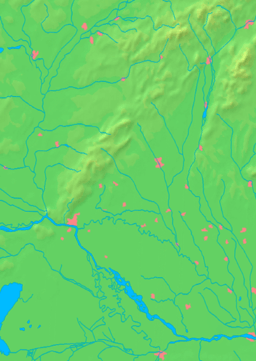Veľké Úľany
| Veľké Úľany | ||
| Nagyföfémes | ||
| Village | ||
| church in the village | ||
|
||
| Country | Slovakia | |
|---|---|---|
| Region | Trnava | |
| District | Galanta | |
| River | Little Danube | |
| Elevation | 119 m (390 ft) | |
| Coordinates | SK 48°10′00″N 17°34′29″E / 48.16667°N 17.57472°ECoordinates: SK 48°10′00″N 17°34′29″E / 48.16667°N 17.57472°E | |
| Area | 41.86 km2 (16 sq mi) | |
| Population | 4,322 (2011) | |
| Density | 103/km2 (267/sq mi) | |
| First mentioned | 1221 | |
| Mayor | Ferenc Gögh | |
| Postal code | 925 22 | |
| Area code | 0 31 | |
| Car plate | GA | |
  Location of Veľké Úľany in Slovakia | ||
  Location of Veľké Úľany in the Trnava Region | ||
| Wikimedia Commons: Veľké Úľany | ||
| Statistics: MOŠ/MIS | ||
| Website: http://www.velkeulany.sk/ | ||
Veľké Úľany (Hungarian: Nagyfödémes) is a large village and municipality in Galanta District of the Trnava Region of south-west Slovakia.
Geography
The municipality lies at an elevation of 123 metres and covers an area of 14.856 km². The village is located around 12 km west of Galanta.
History
In historical records the village was first mentioned in 1221 as Fudemus. After the Austro-Hungarian army disintegrated in November 1918, Czechoslovak troops occupied the area, later acknowledged internationally by the Treaty of Trianon. Between 1938 and 1945 Veľké Úľany once more became part of Miklós Horthy's Hungary through the First Vienna Award. From 1945 until the Velvet Divorce, it was part of Czechoslovakia. Since then it has been part of Slovakia.
Population
It has a population of about 5500 people, in majority ethnic Hungarians.
External links
- https://web.archive.org/web/20070513023228/http://www.statistics.sk/mosmis/eng/run.html
- http://www.velkeulany.sk/
